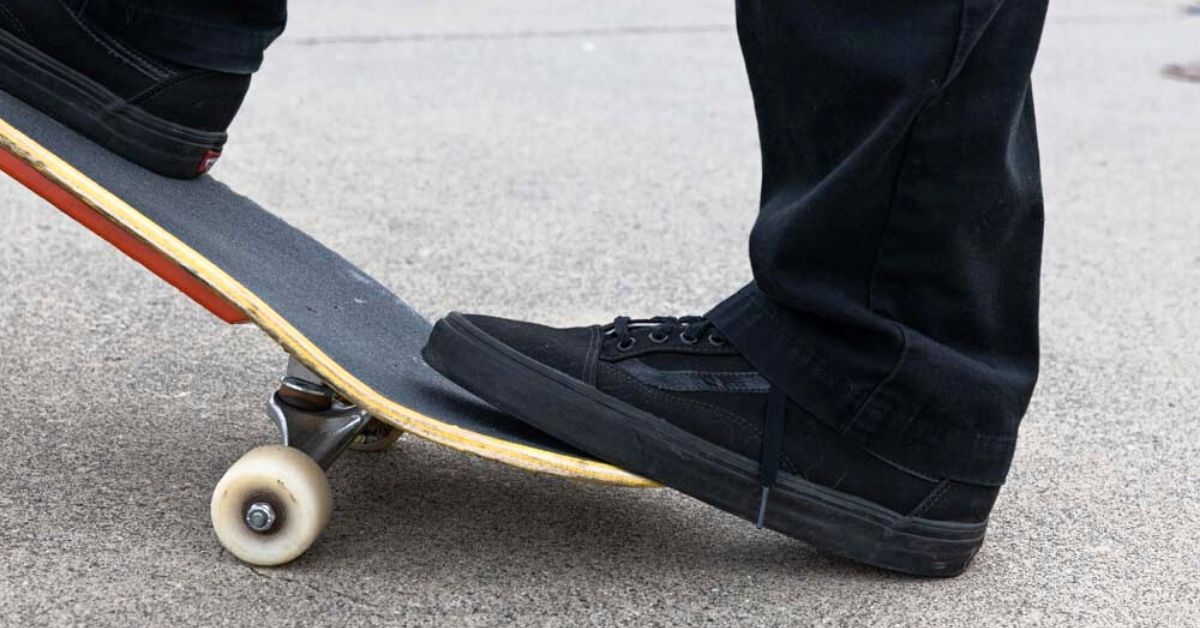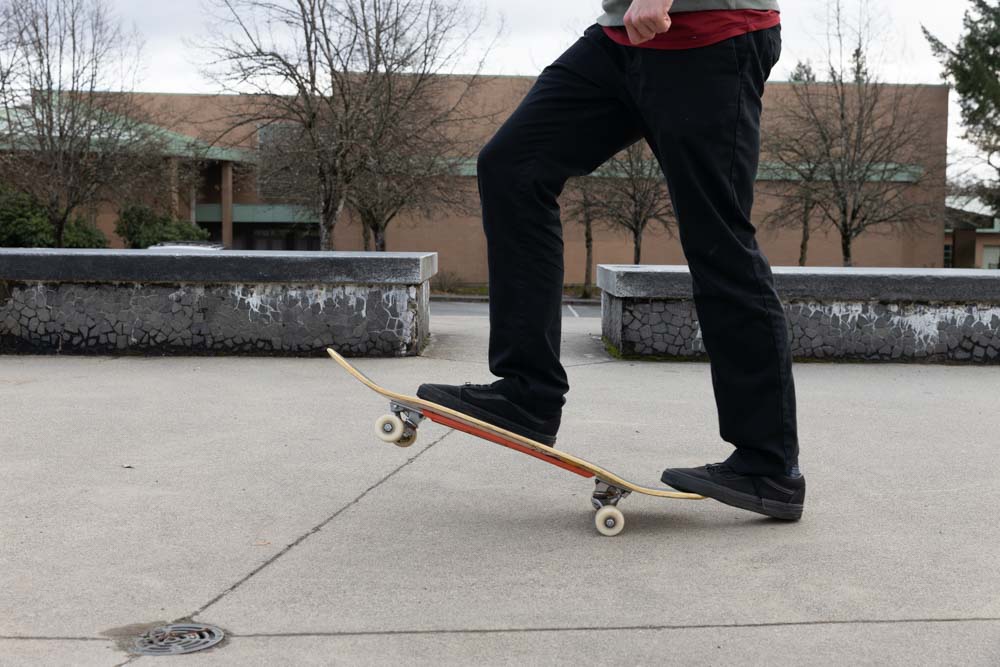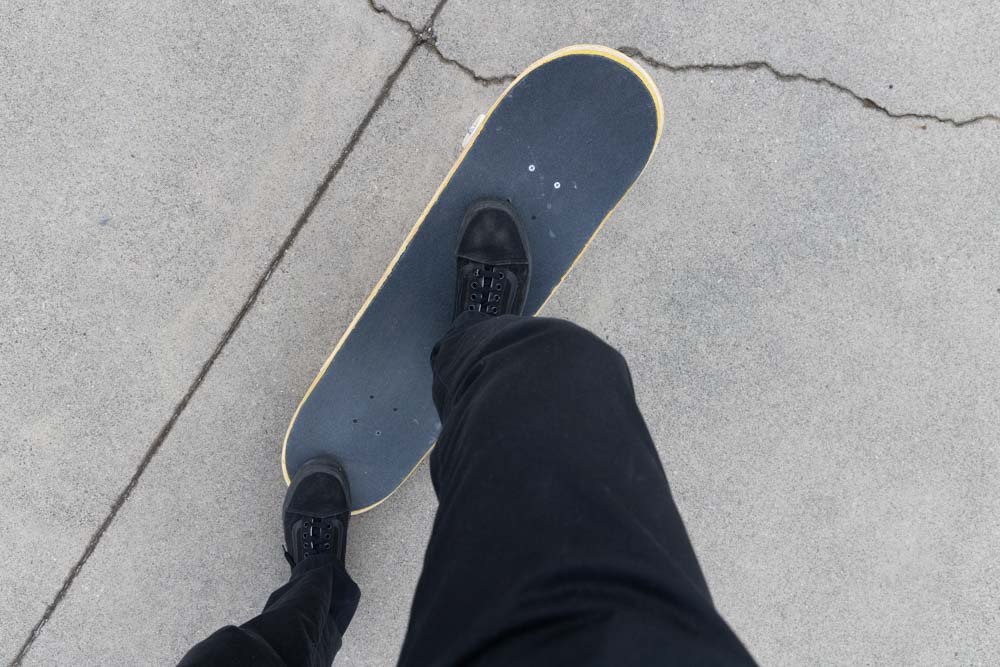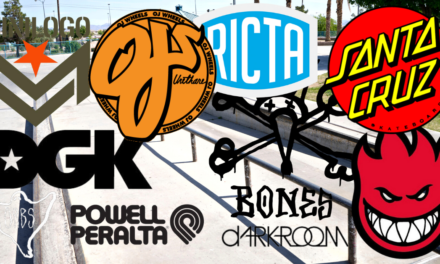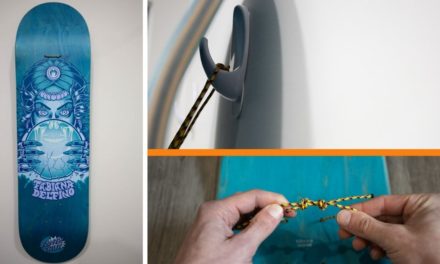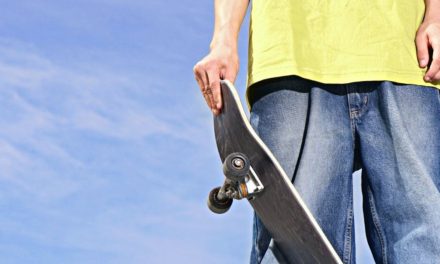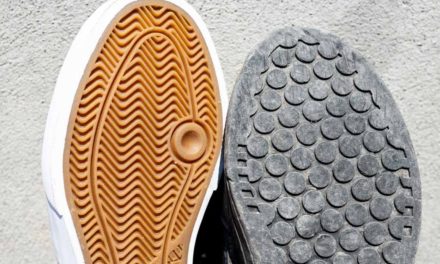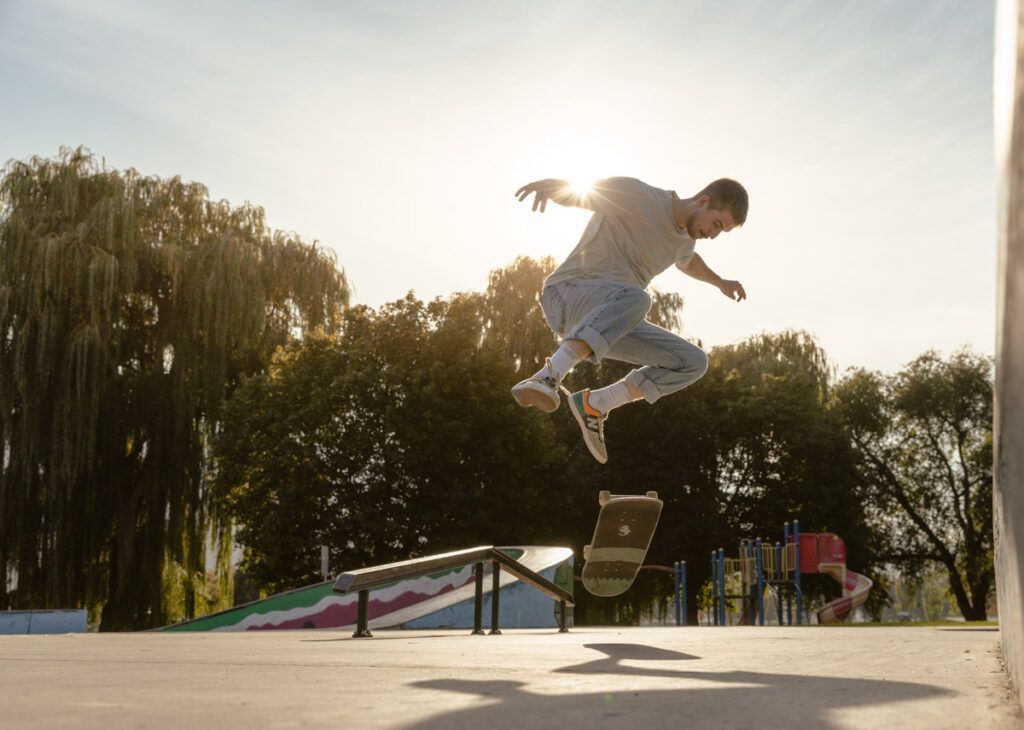It’s all fun and games until you realize you have no idea how to stop your skateboard from rolling out of control.
Luckily there are quite a few different ways to stop on a skateboard; some more graceful than others. Although you’ll likely end up choosing one or two methods that work for you, what matters most is that you feel safe.
So whether you’re bombing a hill, riding the bowl, or carving around your local park, these tips will help you slow down your skateboard safely, regardless of your skill level.
5 Ways To Stop On A Skateboard
Each of these methods is listed in order from most effective, to least effective. Just keep in mind that the difficulty of each method will depend on how comfortable you are on your board.
1. Drag Your Foot
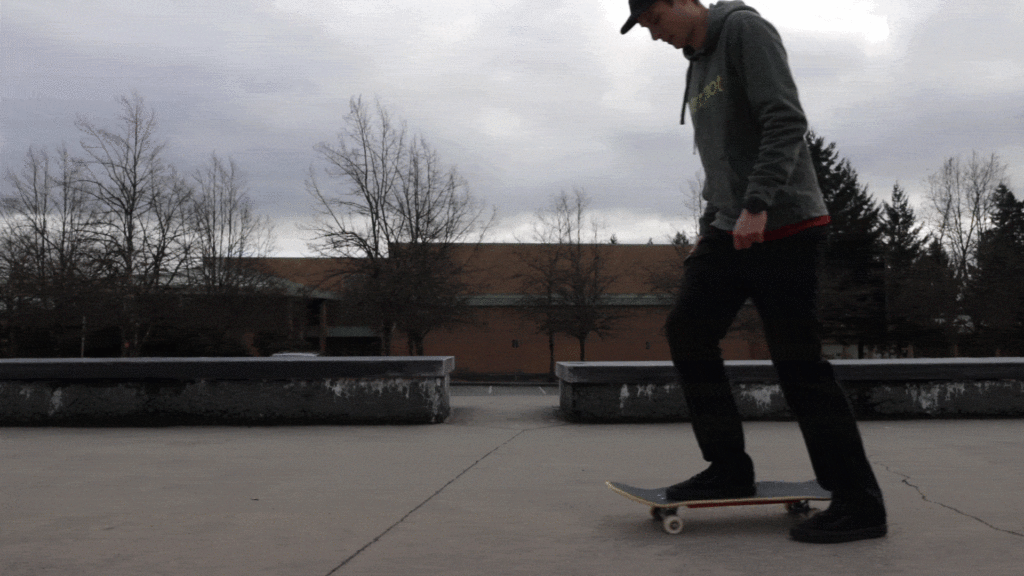
With the foot you use for pushing, you can drag it along the ground to gradually bring yourself to a stop, or help check speed if you feel out of control. The benefit to foot-dragging is that it doesn’t damage your skateboard and it is relatively easy to do once you are confident with pushing.
To stop your skateboarding like this, first, turn your front foot on the skateboard so your toes are pointed forwards. This will prepare you to take your back foot off your deck.
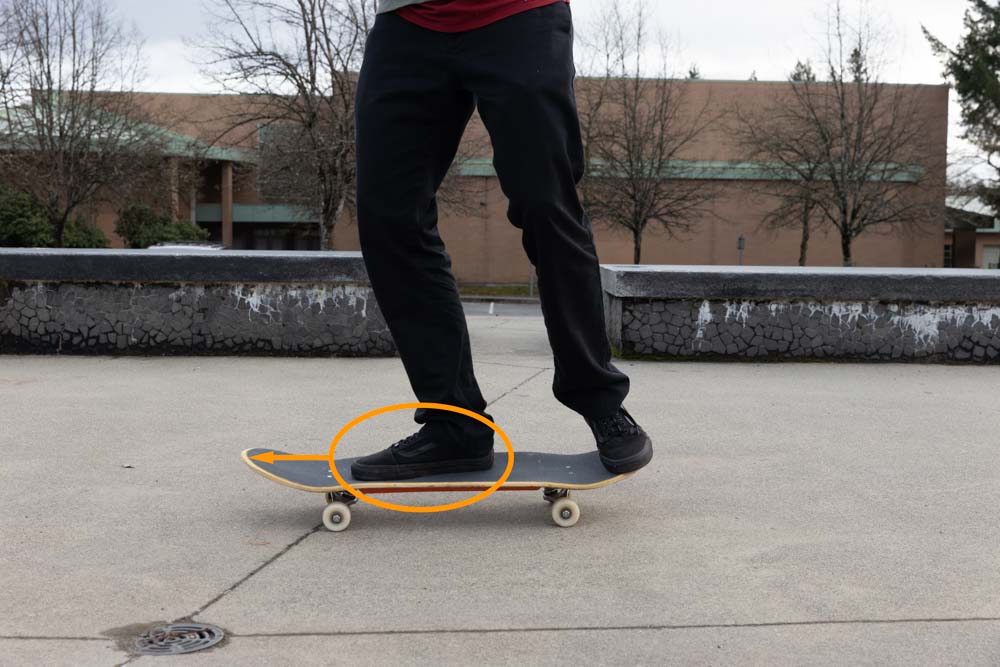
Next, weight your front foot so you can lift your back foot off your skateboard. Take your back foot (aka your pushing foot) and place it flat on the ground.
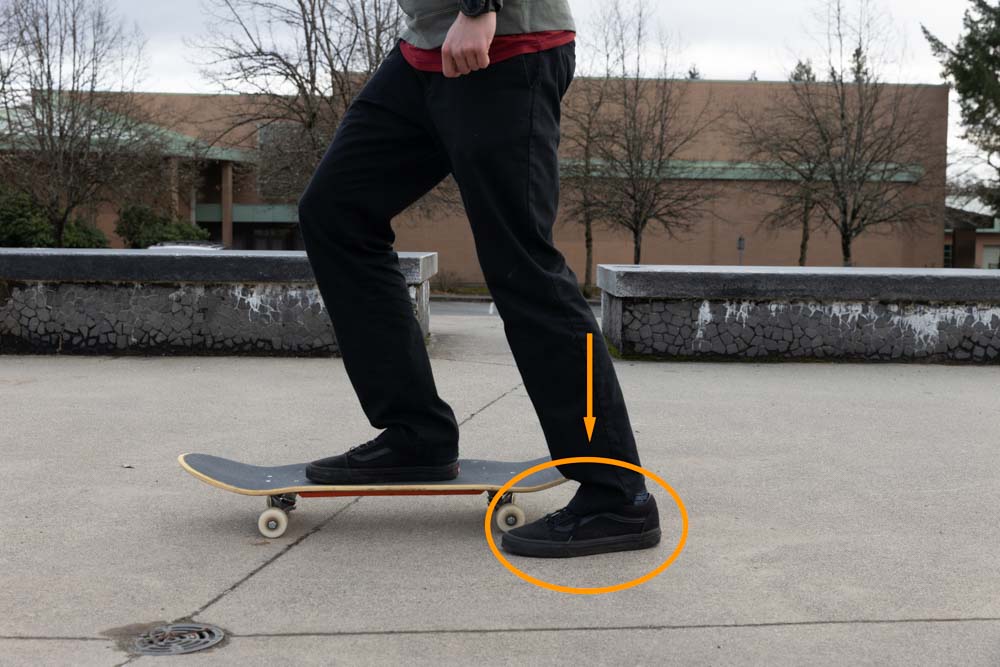
Start adding a small amount of weight onto your foot that’s now placed lightly on the ground. Once you start feeling resistance, gradually apply more weight to that foot until you come to a stop.
With that said, you can also apply lighter pressure to the ground if you want to slow down rather than come to a complete stop. I find myself doing that often if I am coming up with a feature too quickly and need to speed check.
Advantages:
- Beginner-Friendly
- Very Similar Movement To Pushing
- Works For Slowing Down AND Stopping Your Skateboard
- Most Effective For High-Speeds
Downsides:
- Won’t Work Very Well If You’re Used To Pushing Mongo
- Will Wear Down Your Shoes Slightly Faster
2. Heel Drag
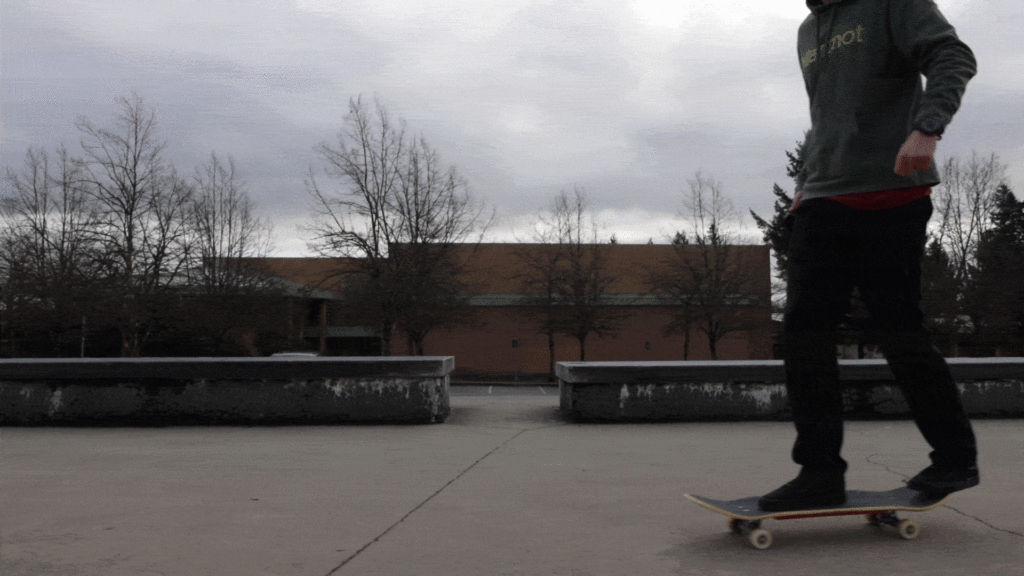
The heel drag is something that many beginners may struggle with but is definitely something to practice. For intermediate to advanced skaters, the heel drag is one of the most widely used stopping techniques.
Rather than dragging the tail of your skateboard on the ground, you place your heel slightly off the tail instead. This way your shoe will drag against the ground, rather than wear through your deck.
To set up for a heel drag, first, turn your front foot so your toes are pointing towards the nose (front) of your skateboard.
Then pivot your back foot slightly so your heel is hanging off your tail by a few inches. You don’t need to overthink the amount your heel is off your tail. All that matters is your heel is hanging off the tail. At this point, both your feet will be pointed forward on your skateboard.
With your feet in position, begin to transfer your weight to the back foot to lift up the front of your skateboard. Continue to weight the foot until the heel of your shoe makes contact with the ground.
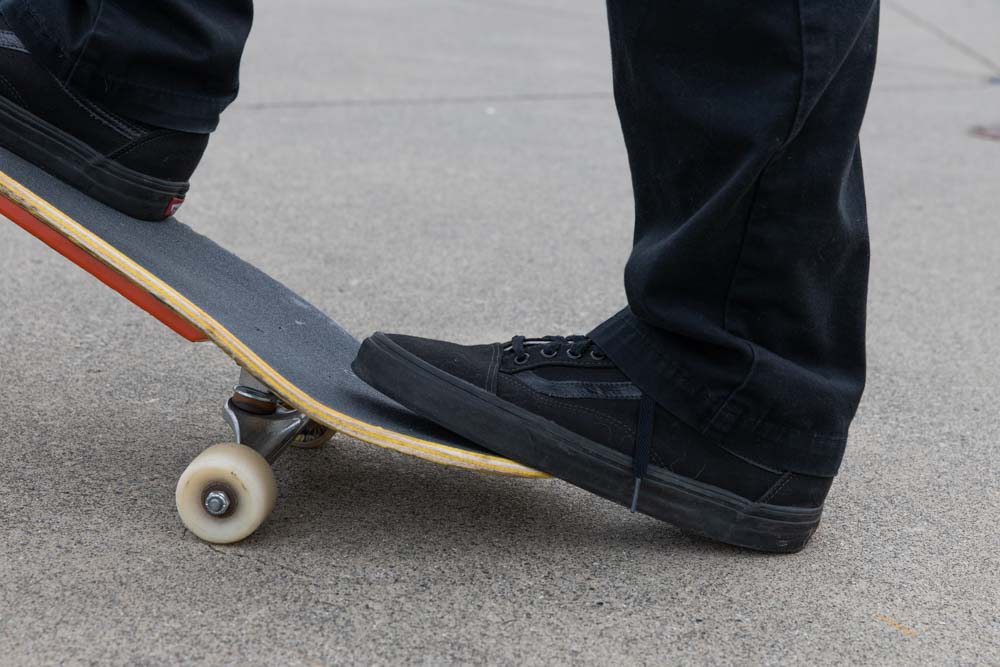
Once you feel the ground dragging on your heel, press more into it. Try to avoid weighting the front of the foot that’s dragging since that will bring the tail of your deck to the ground as well. By focusing your weight on your heel, your deck shouldn’t touch the ground at all.
Foot Positioning POV
Advantages:
- A Great Way To Stop Quickly
- Doesn’t Damage Your Skateboard
- Perfect For Street Skating
- Best Stopping Method For Low To Medium Speeds
Downsides:
- Can Be More Difficult For Beginners
- Not Good At High Speeds Due To Balance Issues
- Will Focus Shoe Wear To Your Heel
3. Jumping Off Or Running It Out
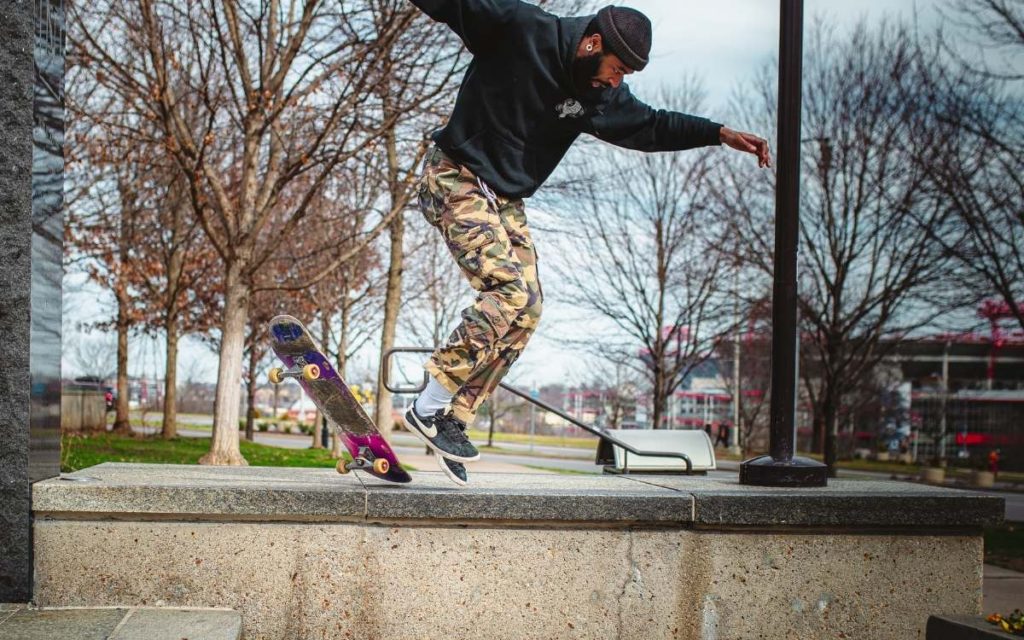
Now into a less graceful way of stopping on a skateboard is to just bail out completely and abandon ship. If you feel like you’re completely out of control or don’t have enough time to stop with either of the previous methods, this is your next best bet.
For bailing out like this, you’ll likely be doing it out of reflex rather than intentionally. However, there is a little trick that will make running out of a trick a bit more smooth.
Once you feel like you have to bail, take your back foot off first and place it ahead of you like you are about to do a big push.
Then rather than pushing through, use that planted foot as your first step in the stride of your run out. Once that foot is planted, take your front foot off your board and begin running to smoothly bail off.
The speed of your strides will come naturally, as you’ll be forced to match the speed of your skateboard at first. Luckily after the first couple of steps, slowing down will become a lot easier.
With that said, bailing out like this can be risky at very high speeds. It’s almost like you’re jumping on a treadmill at max speed and your feet are struggling to keep up. So before you start racing down a huge hill on your skateboard, first get comfortable with bailing out like this at slower speeds.
Advantage:
- Easy For Beginners
- Effective At Most Speeds
- Doesn’t Require Much Balance
- Comes As Second Nature To Most
Downsides:
- Difficult To Slow Down If Bailing Out On A Hill
4. Powerslides
A powerslide is when you force your skateboard to slide horizontally by kicking out and weighting your back wheels. This can be pretty challenging on rougher concrete, or with softer wheels. However, it’s a great way to quickly slow down your skateboard after rolling down a bank or a hill.
Unlike a longboarding powerslide where you drag your hands, power sliding on a skateboard just requires you to weight your back foot and turn your hips to rotate the board. With enough force, your back wheels will come around causing your board to slide horizontally on the ground.
The length you can hold a powerslide will depend on how fast you’re going and how smooth the ground is. In a parkade, for example, where there is smooth polished concrete, you can hold a powerslide for a lot longer than out on the street.
Getting out of a powerslide is done by simply taking force off of your back wheels, and leaning in the direction you want to travel. Your skateboard will naturally come back into position rolling forward after your rear wheels slide back around.
This technique can be hard to learn for a lot of skaters, especially for beginners. Rather than trying to do a full-on powerslide right away, start by trying to slide your back wheels slightly while riding around. As you slowly get the feeling of your back wheels sliding, you can force them around further and further until you have powerslides nailed down.
Advantages:
- Looks Sick
- Great For Speed Checking On Hills
- Fun & Practical For Slowing Down
Downsides:
- Not Ideal For Coming To A Complete Stop
- More Difficult To Learn
- Can Cause Flat Spots On Your Wheels If Done A Lot
5. Tail Drag
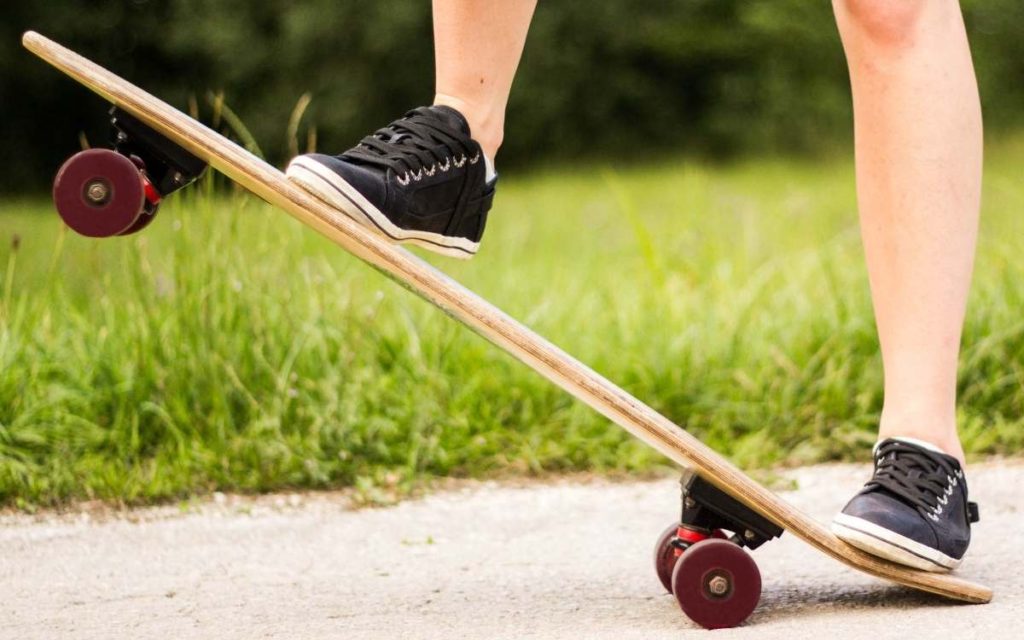
The final method is the last resort for stopping on a skateboard, but one you should definitely avoid. With a tail drag, you are pressing the tail of your skateboard against the ground to slow you down. Kind of like pulling a metaphorical brake lever on your skateboard.
As you further weight the tail, the friction against the ground will cause you to slow down and eventually stop completely. Although this sounds good on paper, in practice, it’s the fastest way to ruin your tail.
When your tail begins to wear down, your deck will have a lot less pop making it harder to do tricks or get onto features. To add to this, the thinner tail weakens the layers of your deck making it more likely to chip if it runs into something against the tail.
Tail dragging is super common among newbie skaters, but actively try other methods of stopping instead. Otherwise, you’ll be going through skateboard decks faster than what your wallet can keep up with.
Advantages:
- None
Downsides:
- Causes Razor Tail Quickly
- Makes Your Board Prone To Chipping
- Ruins Your Pop
The Best Way To Stop A Skateboard For Beginners
Now that you know a few different options for stopping, the best methods for beginners is the foot drag or simply running it out. As you’re just getting comfortable on your board, stopping should be the least difficult thing to do.
By dragging your foot, the motion is very similar to pushing, so it feels relatively easy from the start. However, it may take a bit of practice to get the balance right. Dragging your foot is perfect for just about any speed and feels more secure than many of the other methods.
Now if dragging your foot feels like too much right now, simply running it out is another great option. Although you and your skateboard will be parting ways, what matters is that your hunk of flesh is coming to a safe and complete stop. Running out of a trick or simply after losing balance will feel like second nature to most, and allows you to stop without thinking too hard.
The Best Way To Stop A Skateboard Going Downhill
When it comes to slowing down on a hill, you’re already going at very high speeds so your options are limited. In some cases, running out just isn’t an option since your legs wouldn’t be able to keep up. That’s why I’d recommend foot-dragging, heel-dragging, or power sliding to slow down or stop on hills.
The foot drag is the most ideal since you can hold it for as long as you need, and can be used to slow down or completely stop your momentum. It limits the risk of losing balance and feels more stable than any other method of slowing down at high speeds.
Now with a heel drag, this can work well if you feel very confident with your balance. Since it can put you in a less solid stance, your balance could potentially get thrown off. However, if you feel comfortable doing it, heel braking works extremely well while going fast down a hill.
Lastly, power sliding is a good option to limit your speed without having to take your feet off the board. I wouldn’t suggest using this as your main method of stopping on a hill, but it certainly works well once you have a good feeling for the movement.
So now you know a few different ways to slow down and stop on a skateboard so you can feel a little safer the next time you’re shredding. Some of these methods might feel a bit awkward at first, but with some practice, they’ll become some of your most useful skills as a skater!
Happy Shredding!
– Brendan 🙂

